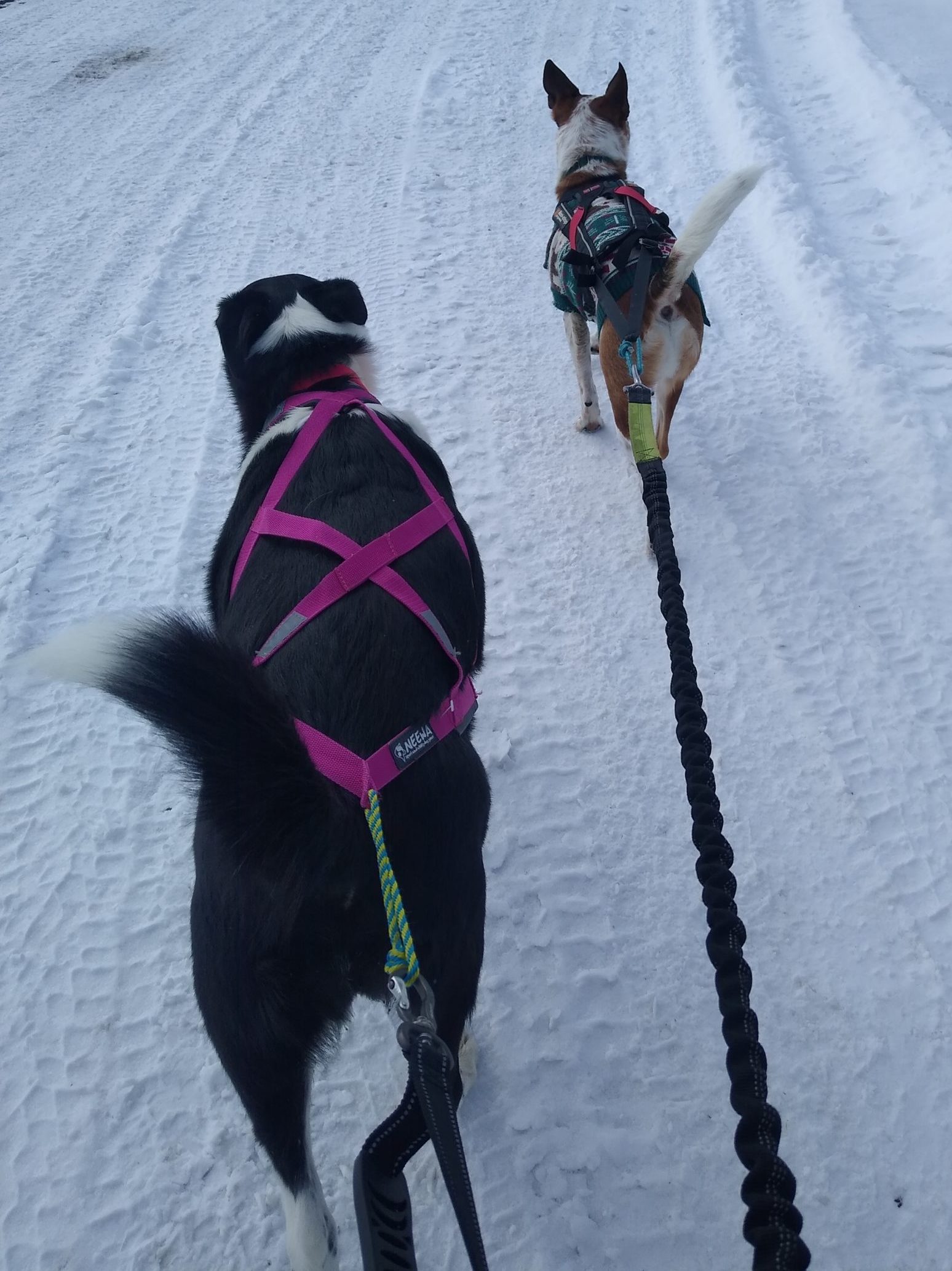An Introduction to Canicross
by Shelby Wood
As someone who lived life fully adhering to the quote, “I don’t think that a person should run unless he’s being chased,”(1) I never saw myself running around the block, never mind a 5K. That was challenged when we brought home our first rescue dog, Scooby Doo. Growing up my family always had dogs, and with all the recent research on health benefits associated with the connection humans experience with dogs it was only a matter of time before dogs came back into my life as an adult. If you’re not familiar with some of the benefits research has found in relation to the human/dog relationship a few are: reduced stress levels, increased physical activity, improves heart health. A quick overview by Hopkins Medicine can be reviewed by clicking here (3).
A bit on our rescue dog, Scooby Doo. He is a character: little dog, BIG personality. He is the sweetest cuddle bug on the couch, on a leash he seems to move in 10 different directions at the same time. The more exercise he got, the fitter he became, meaning he needed more exercise. By default I found myself spending more and more time being active myself. Eventually taking Scooby Doo for a walk morphed into walk-run intervals, leading to 10k runs together. While I still at times struggle with being motivated to go out for a run, especially when it has become more chaotic with two excitable dogs, it’s tough to beat your furry friends looking up with joy while you’re out on an adventure together. The pandemic and the weather have introduced some new challenges to running with the dogs, and so we’re in the process of getting back in to shape together throughout the spring. As such, I thought to share a bit of my experience trying out Canicross.
By this point you may be wondering what Canicross is, and how it might be different from running with your dog on a lead. The largest difference is that in Canicross, the runner has a waist belt on and your dog(s) are attached via a bungee leash. What this means is each time you take a stride, you’ll find slightly longer suspension as your dog will be out front pulling you forward. This is wonderful on the uphill sections; terrifying on the downhills especially if you trail run. Dogs that run Canicross often wear Canicross friendly harnesses to make sure pressure is distributed safely across their body. Just like in starting any new exercise program it’s important your doctor clears you for exercise. On top of you being ready for this adventure, it’s as important for your vet to clear your canine companion. The American Kennel Club (AKC) shares some helpful tips on training, and some additional information on the sport at this link. (4) If you’d like to see what it looks like at elite levels, Non-stop Dogwear, a company that makes Canicross gear and equipment, has a brief video on Canicross Champion, Tessa Philippaerts. (2)
Even if you don’t have a dog yourself, Canicross is still accessible. Your neighbor’s dog might love to take you up on a couch to 5K, or maybe your local animal shelter has a dog that would love an adventure and some one-on-one time with you, their new favorite person!
Works Cited:
(1) Rodriguez , Robert, director. The Faculty . Dimension Films , 1998.
(2) Athlete Profile: Canicross Champion Tessa Philippaerts, Non-Stop Dogwear, 17 Nov. 2020.
(3) “The Friend Who Keeps You Young.” Johns Hopkins Medicine.
(4) Stephanie Gibeault, MSc. “How To Get Started In Canicross: Training Your Dog As A Running Buddy.” American Kennel Club, American Kennel Club, 19 Feb. 2020.
Shelby Wood is Manager of Program Development at CommunityCare of Lyme. She is passionate about her pets and about holistic wellbeing. You may reach Shelby at: Shelby@cclyme.org or (802) 468-7776.





What a wonderful idea IF I didn’t live on Dorchester Road where my three furkids and I exercise by leaping into snow piles BESIDE the plowed areas that are BESIDE the road. The amount of traffic and the speed which people fly by is remarkable and terrifying. My dogs are probably the only ones who respond to the command CAR which means get off the road!
I know it is my fault for moving to a house between the Village and the Skiway. I should have known better!